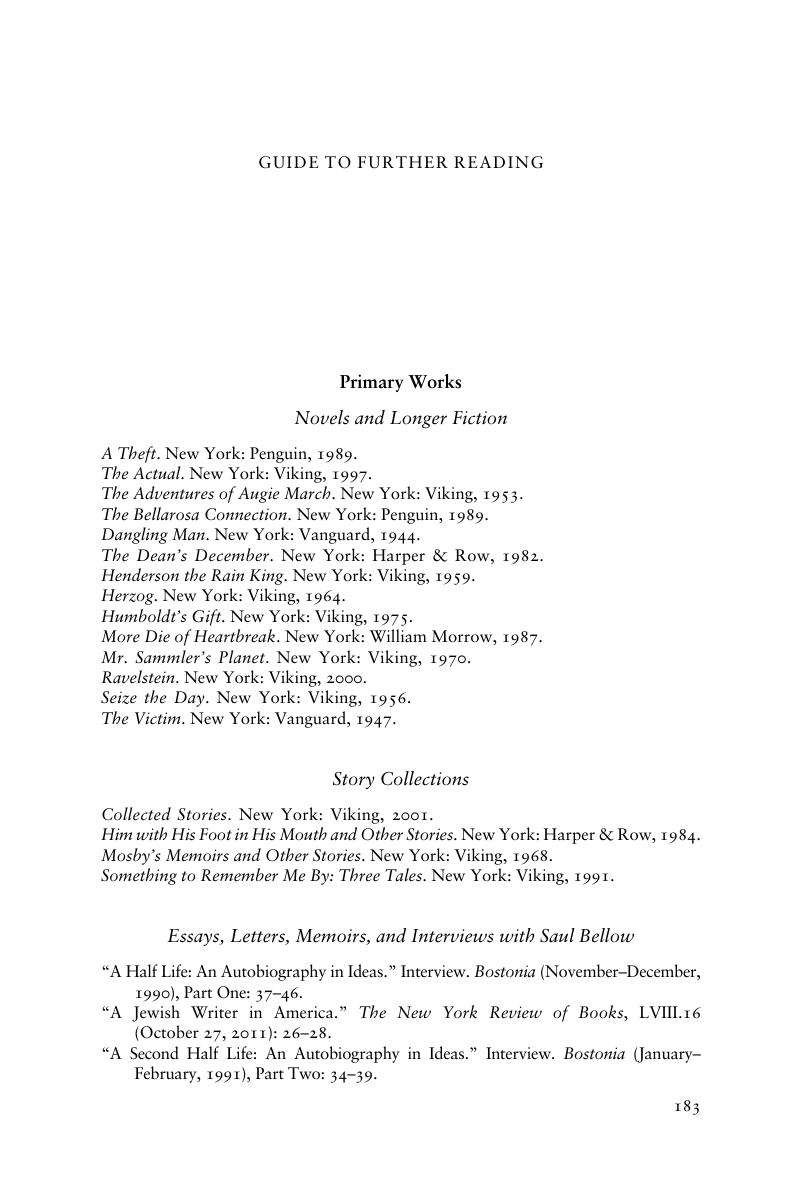Book contents
- The Cambridge Companion to Saul Bellow
- The Cambridge Companion to Saul Bellow
- The Cambridge Companion to Saul Bellow
- Copyright page
- Contents
- Contributors
- Chronology
- Introduction: Saul Bellow in His Times
- 1 Bellow’s Early Fiction and the Making of the Bellovian Protagonist
- 2 Seize the Day: Bellow’s Novel of Existential Crisis
- 3 Bellow’s Breakthrough: The Adventures of Augie March and the Novel of Voice
- 4 Bellow’s Cityscapes: Chicago and New York
- 5 Bellow and the Holocaust
- 6 Humboldt’s Gift and Bellow’s Intellectual Protagonists
- 7 On Being a Jewish Writer: Bellow’s Post-War America and the American Jewish Diaspora
- 8 Bellow and His Literary Contemporaries
- 9 Women and Gender in Bellow’s Fiction: Herzog
- 10 Race and Cultural Politics in Bellow’s Fiction
- 11 Bellow on Israel: To Jerusalem and Back
- 12 Bellow’s Non-Fiction: It All Adds Up
- 13 Bellow’s Short Fiction
- 14 The Late Bellow: Ravelstein and the Novel of Ideas
- Guide to Further Reading
- Index
- Cambridge Companions to…
- References
Guide to Further Reading
Published online by Cambridge University Press: 27 January 2017
- The Cambridge Companion to Saul Bellow
- The Cambridge Companion to Saul Bellow
- The Cambridge Companion to Saul Bellow
- Copyright page
- Contents
- Contributors
- Chronology
- Introduction: Saul Bellow in His Times
- 1 Bellow’s Early Fiction and the Making of the Bellovian Protagonist
- 2 Seize the Day: Bellow’s Novel of Existential Crisis
- 3 Bellow’s Breakthrough: The Adventures of Augie March and the Novel of Voice
- 4 Bellow’s Cityscapes: Chicago and New York
- 5 Bellow and the Holocaust
- 6 Humboldt’s Gift and Bellow’s Intellectual Protagonists
- 7 On Being a Jewish Writer: Bellow’s Post-War America and the American Jewish Diaspora
- 8 Bellow and His Literary Contemporaries
- 9 Women and Gender in Bellow’s Fiction: Herzog
- 10 Race and Cultural Politics in Bellow’s Fiction
- 11 Bellow on Israel: To Jerusalem and Back
- 12 Bellow’s Non-Fiction: It All Adds Up
- 13 Bellow’s Short Fiction
- 14 The Late Bellow: Ravelstein and the Novel of Ideas
- Guide to Further Reading
- Index
- Cambridge Companions to…
- References
Summary

- Type
- Chapter
- Information
- The Cambridge Companion to Saul Bellow , pp. 183 - 192Publisher: Cambridge University PressPrint publication year: 2016



